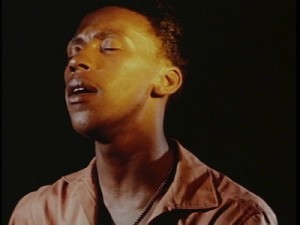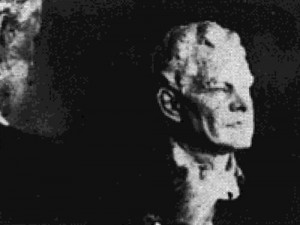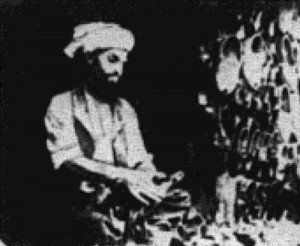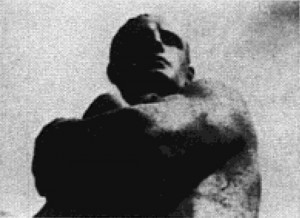
"Nightsong is a dramatic story of a colored night club singer, Willie Wright, trying to make the big time and, most of all "to get people to like me." One evening while singing, his eyes rest on the face of a beautiful young white girl and his infatuation with her becomes unmistakable as the story unfolds. The film is 99% visual with a sound track that places great emphasis on the various moods of the young singer" PSA Journal, Sept. 1965, 50.

"Portrait in Bronze is an excellent documentary of the making of a bronze bust from the first sitting and the sculpturing in clay right on through to the finished product. The original was shot on Ektachrome commercial and the projection print is excellent in every particular - a large factor in the film's success. It received the MPD Golden Scissors Award for best editing of any film in the contest" PSA Journal, Sept. 1965, 50.

"The Stones of Eden is a documentary on the modern day life of a common wheat farmer in Afghanistan. Today he ekes out his living about the same as he did 2000 years ago. We see him fasten the yoke to his oxen and till the hard dry soil with a primitive plow. Five times a day he stops to kneel in prayer, no matter where he is. We see the grinding of wheat and the baking of bread. At the village the farmer exchanges his wheat for a few necessities, then leaves the village, his only contact with the 20th Century, for his fortified walls of stone to keep out wild animals, human enemies, and other fears. The film won the MPD Student Film Award" PSA Journal, Sept. 1965, 50.

"Vigeland on Life is a poetic study of the work of Gustav Vigeland, famous Norwegian sculptor. The narrator reads passages from the poetry of Kahlil Bigran, selecting excerpts from "The Prophet" while on the screen the camera gives us several dozen glimpses of Vigeland's statuary" PSA Journal, Sept. 1965, 50.
"Work of Nature–The Micro-Aquatic Realm takes us to the Appalachian mountain region of the United States where, in not more than 18 inches of water, and at times aided by a microscope, we meet soft water snails, flatworms, protozoan organisms of one cell and multi-cell, small flies, water skimming spiders, one of over 700 species of fresh water mites less than 1/10 of an inch in length, cyclops 1/15 of an inch, and a little crab scarcely 1/25 of an inch" PSA Journal, Sept. 1965, 50.
"Grandmother's Portrait is a documentary on the making of a modernistic, even abstract, metal "portrait" inspired by a photograph of the artist's grandmother. The artist doing the sawing and welding needed to construct the "portrait" is Kasperi Lofgren" PSA Journal, Sept. 1965, 50.
"If Summer Comes. "What does summer mean to you?" asks the narrator. It means different things to different people, but in this poetic film he describes what summer means to him – fishing, walking through the woods, filling his pockets with crabapples, searching for little animals by the stream, and so on. A nostalgic little study, smoothly carried out" PSA Journal, Sept. 1965, 50.
"Indecisive tells the story of a girl who is rather mixed up and can't decide if it is worth while to go on living. The treatment is unlike most amateur efforts and because of its novel approach the film maintains interest to the end" PSA Journal, Sept. 1965, 50.
"Nancy tells and shows in a series of five flashbacks what impressed 12 year old Nancy most during her summer vacation. Many a family vacation film ends with the unpacking of the car and bringing in the suitcases. That is where this little vacation film begins. As Nancy unpacks her bag she looks at the things she has brought home and they remind her of her summer's events–boating, woodgathering and the removal of a splinter from grandfather's hand, the milkweed plants and the monarch caterpillar, swimming, a picnic, feeding the birds, and playing with other girls her own age. This is decidedly different from the ordinary travel film, and much of its charm comes from the voice of a young Nancy as she narrates the film. It won the MPD Travel Film Award" PSA Journal, Sept. 1965, 50-51.
"The 104 is a serious, factual recount of the landing of the Pilgrims at Plymouth, Mass., early in the 17th Century in terms of what one sees and finds in the vicinity of Plymouth Rock today. The rock itself is the legendary start of it all, followed by glimpses of wax figures that have been created to resemble some of the monuments and other scenes in the area" PSA Journal, Sept. 1965, 51.
Total Pages: 299